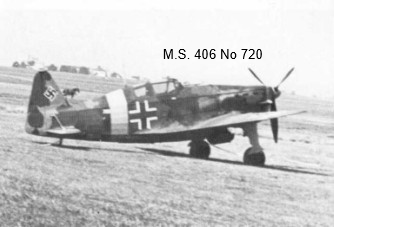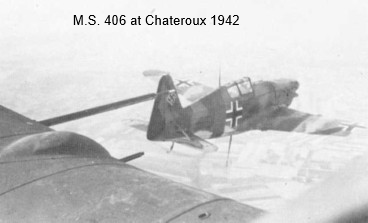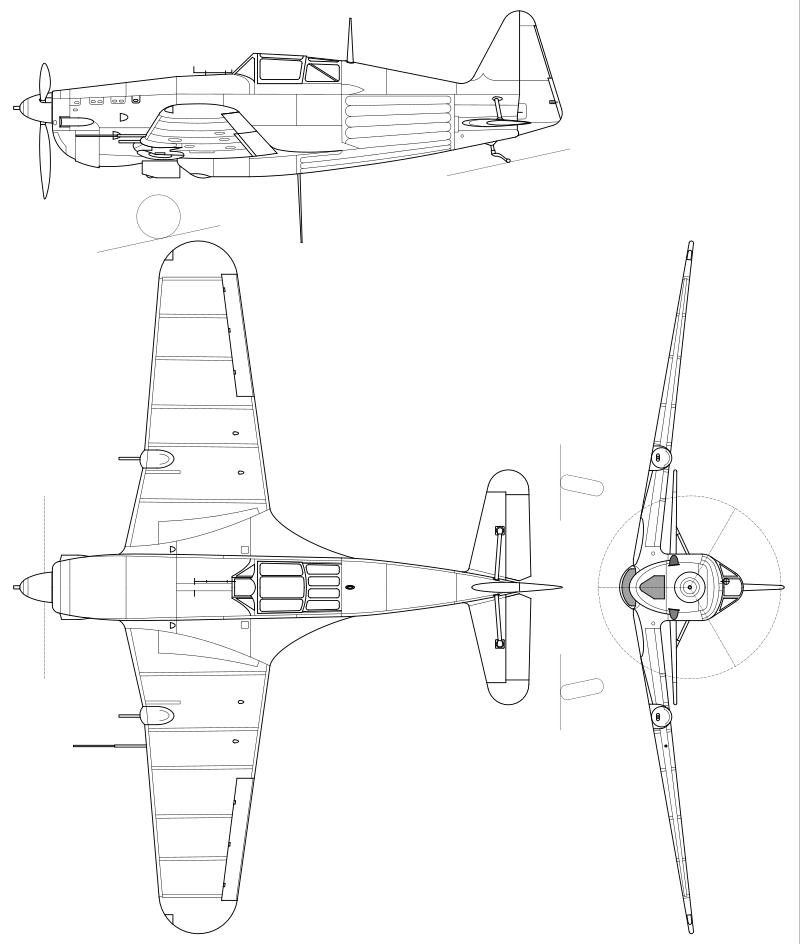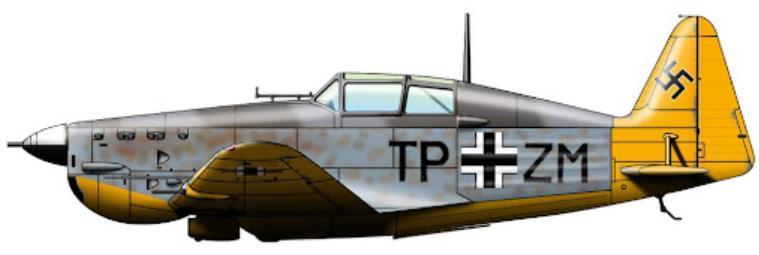| Type |
Werk.Nr |
Registration |
History |
|
|
BI+XD |
|
|
|
BI+XE |
|
|
|
BI+XE |
|
|
|
DS+... |
|
|
|
DS+PM |
|
|
|
DS+PQ |
|
|
|
KO+ZA |
|
|
|
TP+SP |
|
| C |
|
TP+ZC |
|
| C |
|
TP+ZE |
|
| C |
|
TP+ZM |
|
|
|
|
|
|
|
|
|
|
|
|
|
|
|
|
|
|
|
|
|
|
|
|
|
| Type |
Single seat fighter |
| Engine |
1 Hispano-Suiza 12Y-31 V-12 . Specific fuel consumption: 0.265 kg/kWh . Specific oil consumption: 0.008 kg/kWh . With 3-bladed variable-pitch propeller, 3 m diameter Chauviere 351M (MS 406 C1) Ratier 1607 3.1 m diameter (MS 406 C1) |
| Dimensions |
Length 8,17 m , height 3,25 m, span 10,61 m, wing area 16,0 m2 , |
| Weights |
Empty 1895 kg, loaded , max. take off weight 2540 kg |
| Performance |
Max.. speed : 452 km/h at 2,000 m 483 km/h at 4,000 m , 490 km/h at 4,500 m , 476 km/h at 6,000 m , 440 km/h at 8,000 m
, cruising speed , range 1100 km, endurance 2 h 20 min. 30 sec., service ceiling 9400 m , Stall speed: 160 km/h , without flaps 135 km/h with flaps
climb to 2,000 m in 2 minutes 32 seconds to 4,000 m in 5 minutes 16 seconds , 4,500 m in 6 minutes 16 seconds, to 6,000 m in 9 minutes 3 seconds, to 8,000 m in 14 minutes 52 seconds, to 9,000 m in 21 minutes 37 seconds. Take-off run to 8 m : 270 m Landing run from 8 m 340 m |
| Armament |
1 20 mm Hispano-Suiza HS.404 cannon , 2 7.5 mm MAC 1934 machine guns |
The Morane-Saulnier M.S.406 is a French fighter aircraft developed and manufactured by Morane-Saulnier starting in 1938. It was France's most numerous fighter during the Second World War and one of only two French designs to exceed 1,000 in number. At the beginning of the war, it was one of only two French-built aircraft capable of 400 km/h – the other being the Potez 630.
In response to a requirement for a fighter issued by the French Air Force in 1934, Morane-Saulnier built a prototype, designated MS.405, of mixed materials. This had the distinction of being the company's first low-wing monoplane, as well as the first to feature an enclosed cockpit, and the first design with a retracting undercarriage. The entry to service of the M.S.406 to the French Air Force in early 1939 represented the first modern fighter aircraft to be adopted by the service. Although a sturdy and highly manoeuvrable fighter aircraft, it was considered underpowered and weakly armed when compared to its contemporaries and the M.S.406 was outperformed by the Messerschmitt Bf 109E during the Battle of France.
The type was capable of holding its own during the so-called Phoney War from September 1939 to 10 May 1940. Upon the invasion of France in May 1940, approximately 400 Moranes were lost. Out of these, around 150 were lost to enemy fighters and ground fire, while another 100 aircraft were destroyed on the ground during enemy air raids; the remainder were deliberately destroyed by French military personnel to prevent the fighters from falling into German hands. French M.S.406 squadrons had achieved 191 confirmed victories, along with another 83 probable victories] Limited production of the type continued in France for sometime after the Armistice of 22 June 1940 under German supervision.
The M.S.406 was exported to a range of customers. Out of 160 aeroplanes ordered by Poland, none had reached Polish territory before the outbreak of war, with the first consignment sent on 29 August 1939. Of particular note was its service in the hands of Finnish and Swiss air forces; both operators chose to develop indigenous derivatives of the M.S.406, such as the Finnish Mörkö-Morane). By the end of the war, the majority of M.S.406s and its derivatives were out of service, having been rendered obsolete by rapid advances in fighter aircraft technology. Its final use was as an advanced trainer aircraft in Finland, prior to the last examples of the type being scrapped during 1952
During 1934, the Service Technique de l'Aéronautique (Aeronautical Technical Service) of the French Air Force issued the "C1 design" requirement for a new and modern single-seat interceptor fighter. Envisaged as a monoplane with a retractable undercarriage, the prospective fighter aircraft was to serve as a replacement for the Dewoitine D.371, Dewoitine D.500, and Loire 46 aircraft. Amongst the various aviation companies who took interest in the specification, to which the potential for a large production order was attached, was French aircraft manufacturer Morane-Saulnier.
The company's design team quickly projected that a low-wing monoplane design would be capable of delivering the desired level of performance; other features were to include an enclosed cockpit, a variable-pitch propeller and landing flaps. It was decided to submit their own response to the requirement, the M.S.405; work on the design was headed by the firm's Engineer-in-Chief, Paul-René Gauthier. The shape and basic configuration of the M.S.405 were hotly contested, particularly between 'traditional' advocates of biplane aircraft and 'modern' monoplane supporters.
The MS.405 was a low-wing monoplane of mixed construction, with fabric-covered wooden tail, with a bonded metal–wood material (Plymax) skin fixed to duralumin tubing. Plymax consisted of a thin sheet of duralumin bonded to a thicker sheet of plywood. Morane-Saulnier had a long history of producing warplanes dating back to the pre-First World War years but in the inter-war period, they had concentrated on civil designs. The aircraft was a departure for them, being their first low-wing monoplane, first with an enclosed cockpit and first with retracting landing gear. Prior to this, their most modern designs were fixed-gear parasol monoplanes.
The new 641.3 kW (860 hp) Hispano-Suiza 12Ygrs engine driving a two-pitch Chauvière propeller powered the first M.S405-1 prototype, which flew on 8 August 1935.[8][2] First flown by French aerobatic pilot Michel Détroyat, the prototype demonstrated the type's favourable flying characteristics from the onset. Early test flights were flown with a fixed undercarriage, which was replaced by a retractable counterpart later on. After 80 hours of test flights, in January 1936, the prototype was delivered with all military equipment fitted to CEMA at Villacoublay to participate in service trials. On 19 June 1937, the first prototype generated substantial publicity when Détroyat flew it from Paris to Brussels in Belgium, to be displayed at the Brussels Aeronautical Exhibition.
Development of the M.S.405 proceeded fairly slowly; testing revealed the need to modify the wing planform and dihedral, while the Chauvière-built propeller was replaced by a Levasseur-built counterpart. The second M.S.405-2 prototype with a 671.1 kW (900 hp) Hispano-Suiza 12Ycrs engine did not make its first flight until 20 January 1937, almost a year and a half behind the first prototype.The second prototype was able to attain a speed of 443 km/h during testing. During July 1937, both prototypes were flown to the Paris Air Show. On 29 July 1938, the second prototype was lost along with its pilot. During March 1937, having been suitably impressed with its performance, an initial order was placed for the construction of 16 pre-production prototypes, which were to incorporate the design improvements that had been made upon the previous version.
As a consequence of various changes made between the prototypes and the pre-production aircraft, the name M.S.406 was adopted for the type. On 3 February 1938, the first pre-production aircraft made its first flight; during December 1938, the final pre-production M.S.406 was delivered.[10] The pre-production aircraft served to build up experience of manufacturing and testing of the type in advance of production M.S.406s. These 15 aircraft were used for various purposes, such as the third and tenth which served as examples for subcontractors Société nationale des constructions aéronautiques de l'ouest (SNCAO) and Société nationale des constructions aéronautiques du Midi (SNCAM), and the twelfth and thirteenth functioned as prototypes for the Swiss D-3801 and D-3800 export models.Variants of the aircraft, including some which later entered mass production, were first represented amongst the pre-production aircraft.
The two main changes of the M.S. 406 were the inclusion of a new wing structure which saved weight and the fitting of a retractable radiator, underneath the fuselage. Powered by the production 641.3 kW (860 hp) HS 12Y-31 engine, the new design was over 8 km/h (5 mph) faster than the earlier M.S.405 model. Designed to reach speeds of 489 km/h , examples were tested without encountering any difficulty in reaching up to 730 km/h in a dive. Armament consisted of a 20 mm Hispano-Suiza HS.9 or 404 cannon with 60 rounds in the V of the engine, fired through the propeller hub and two 7.5 mm (0.295 in) MAC 1934 machine guns (one in each wing, each with 300 rounds). A weakness of the MAC 1934 was its operation at high altitudes. It was found that at altitudes over 6,000 m, the guns had a tendency to freeze. Heaters were added to the guns for high-altitude use.
During the late 1930s, there was a growing perception that a major conflict between Germany and France was not only looming but increasingly unavoidable. As part of its rearmament, the French Air Force placed an order for 1,000 M.S406 airframes during March 1938. Morane-Saulnier was unable to produce anywhere near this number at their own factory, thus a second assembly line was established at the nationalized factories of SNCAO at St. Nazaire in order to produce the type.[12] In April 1937, an initial order for 50 SNCAO-built M.S.406 fighters was placed; in August 1937, a follow-up order for 80 aircraft was issued. In April 1938, as a component of the French Air Force's Plan V, a large order for 825 M.S.406 was placed with the various nationalised French aircraft industries.
During late 1938, production of the M.S.406 commenced; the first production example performed its maiden flight on 29 January 1939.[12] Production was initially quite slow; only 18 aircraft were produced at Puteaux, along with 10 fighters built by SNCAO. Deliveries were hampered more by the slow deliveries of engines than by the lack of airframes; while efforts were made to correct this, according to Botquin, the engine shortage was present throughout the manufacturing programme. By April 1939, the production lines were delivering six aircraft per day and when war broke out on 3 September 1939, the rate production had risen to 11 aircraft per day; at this time, 535 M.S.406s had entered squadron service
Production had reached a high-point of 147 M.S.406 aircraft during August 1939, before declining as manufacturing efforts were progressively re-directed towards other aircraft, such as the Lioré et Olivier LeO 45.[12] Manufacturing of the M.S.406 was wound down during March 1940, by which point the original order for 1,000 fighters had been delivered in full to the French Air Force, along with a further 77 aircraft which had been constructed for foreign users (30 fighters for Finland and 45 for Turkey). Additional M.S.406 orders that had been placed for Lithuania and Poland were cancelled with the outbreak of the war.
Germany took possession of a large number of M.S.406s and the later M.S.410s. The Luftwaffe operated a number of the type for training purposes, while others were sold off to third parties. Finland purchased additional M.S.406s (as well as a few 406/410 hybrids) from the Germans, while others were passed off to Italy and some 48 aircraft were delivered to the Air Force of the Independent State of Croatia during 1943.
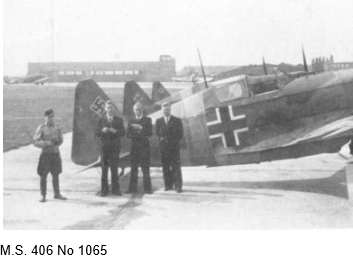

M.S. 406 No 263 Refueling on it愀 way to Finland


